by GardenLover | Sep 25, 2015 | Special Topic
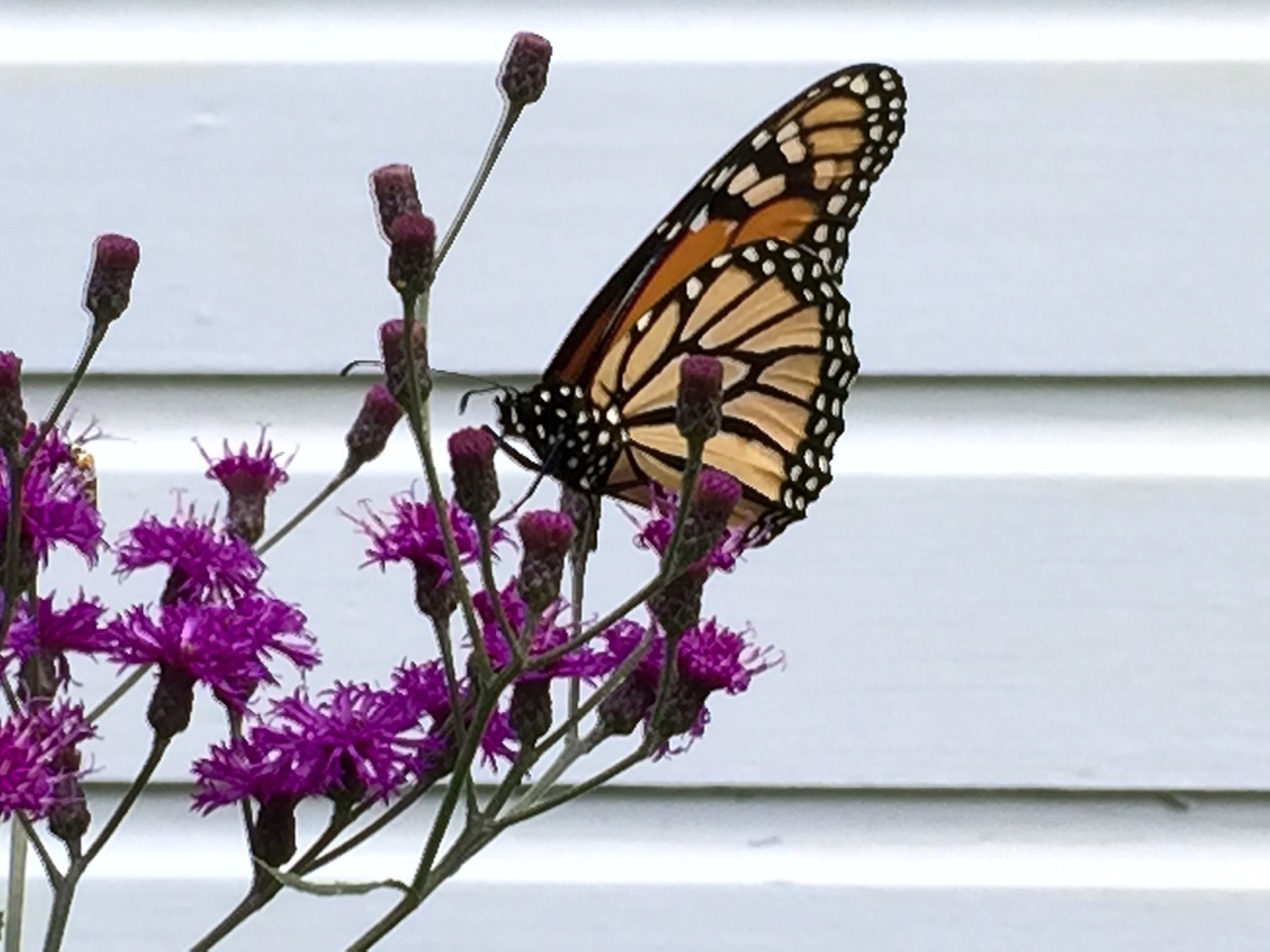 Dose of denial keeps summer around no matter what calendar says
Dose of denial keeps summer around no matter what calendar says
By Michael Leach
The calendar shows autumn officially arrived September 23. Well excuse me, but I’m not ready to give up summer just yet.
Granted this summer is a doozie. (Note the use of the present tense, I’m firmly in denial.) This summer is extremely hard to love, even for one who rarely complains about the heat, humidity and insects. (This apparent content is hardly a virtue. My venom is reserved to carp about winter from the first to last frost.)
We’ve had all three summer issues in 2015 but the insects were especially horrific. First came legions of chiggers. As their wounds slowly healed, I began donating several pints of blood a week to vicious clouds of ravenous mosquitoes.
Avoiding some sort of fungal infection wasn’t easy during the monsoon season of early summer when record rain fell in June and July in our part of the Midwest. Another hard to resist temptation was taking antidepressants while those soggy clouds lumbered overhead for weeks on end. Seeing moon and stars — or the sun — became cause for celebration. (We had few celebrations until mid-August.)
Then came September with a mini drought that is forcing me to irrigate, a loathsome task in my book. At least mosquitoes are down for the count allowing almost pest-free patio sitting. While a sweatshirt or jacket is required for morning coffee, I realize this summer patio pleasure was sorely missed.
The other evening, nature almost made up for all the ills. As I gazed at the top of the sycamore warmly suffused with the amber sunset, four or five Monarch butterflies fluttered and swooped among the high maple branches. They alit and stayed, apparently roosting for the night. As this amazing fact sank in, I glanced to the tree tops again and spotted the moon, a pearl against the clear blue sky.
Such a memory will be an even greater treasure when the most ardent of the lovers of summer sits housebound, waiting for spring
by GardenLover | Sep 23, 2015 | Favorite Flora, Snapshots, Special Topic
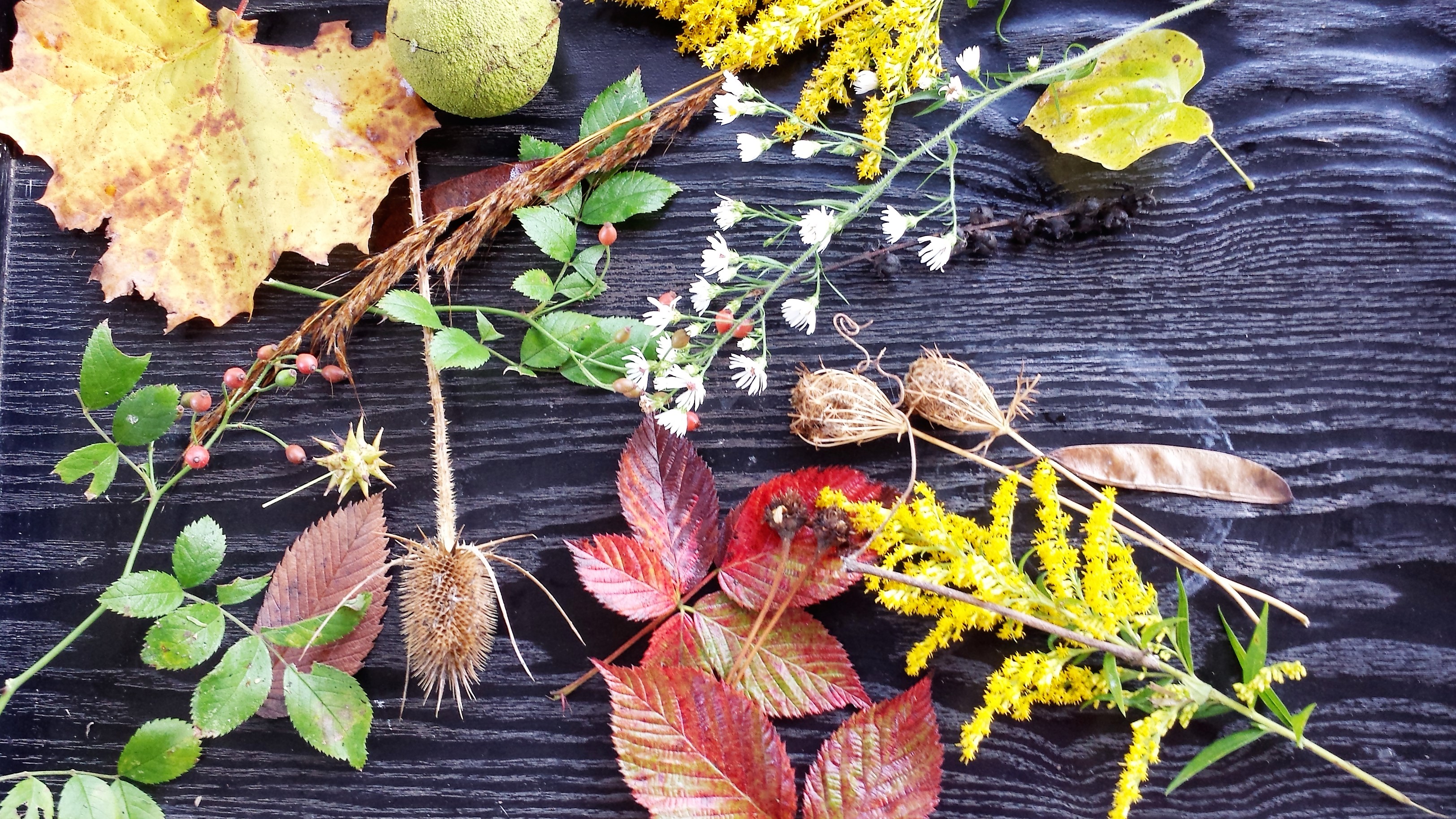 Looking for some fall gardening inspiration? Well, check out some of the season’s best posts on Heartland Gardening:
Looking for some fall gardening inspiration? Well, check out some of the season’s best posts on Heartland Gardening:
by GardenLover | Sep 15, 2015 | Special Topic

IPM’s Pro-Active Pest Control Approach
For years, I battled with insects – wasps, Japanese beetles, bean beetles, stink bugs, aphids and more. Like the woman in the garden store line this weekend, I used to buy the most powerful insecticide to wipe out pests even if my cause was hopeless. After learning the Integrated Pest Management (IPM) approach in a Master Gardening class, I’ve banished such revenge spraying and adopted new ways that support a balanced ecosystem. You see, my trigger-happy approach was killing off beneficial bugs such as pollinating bees and aphid-eating ladybugs. So, now I resolve to the IPM ways, and my garden thanks me.
In the simplest terms, IPM is a pro-active approach of first preventing disease by managing a healthy garden then staying in tune with the garden through the growing season and managing pest problems with the most effective control that has the least impact on the environment.
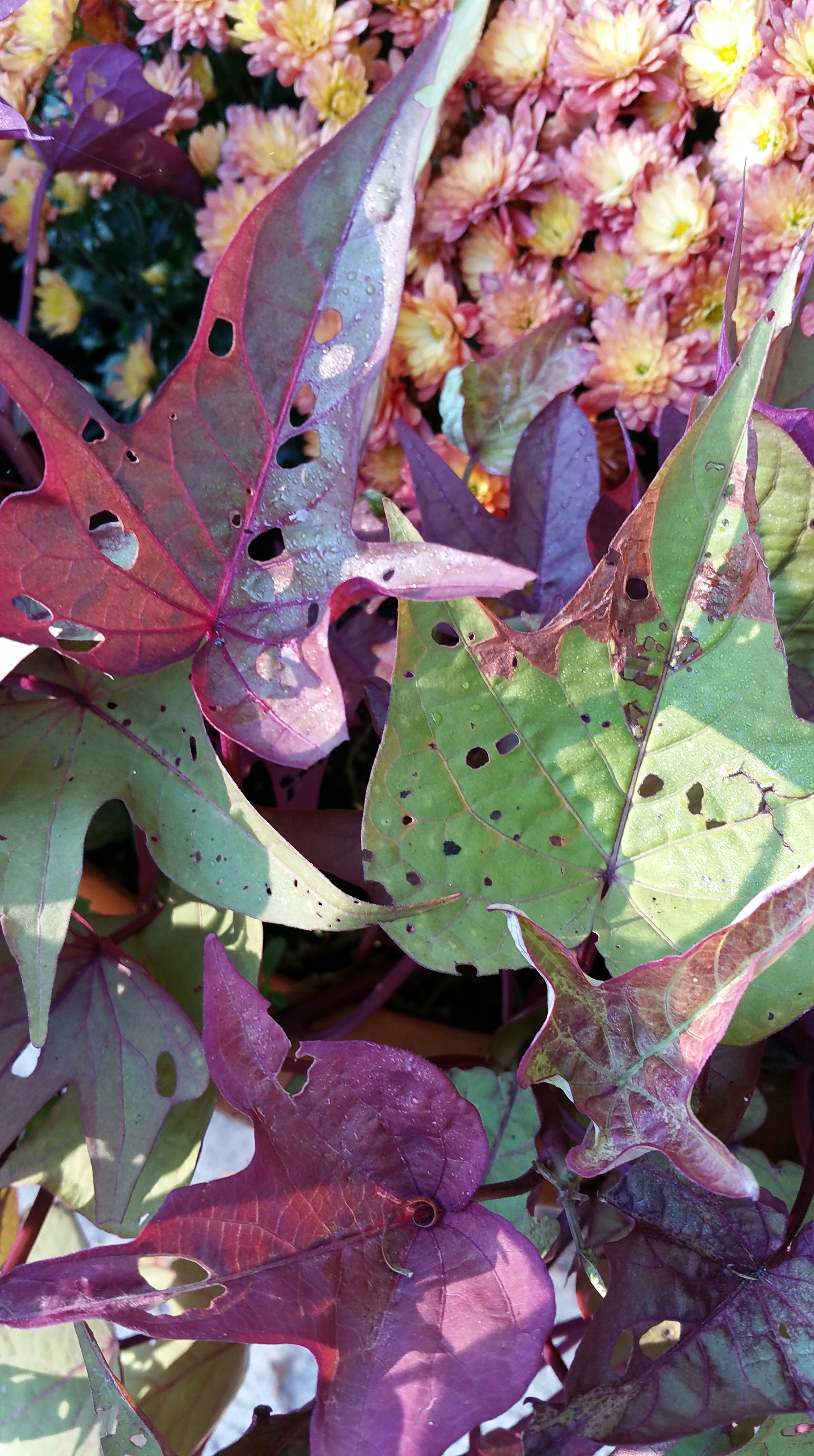
Tolerating this sweet potato vine leaf damage
Here are the IPM steps:
- Prevention: Begin by buying healthy plants and planting them in the right location to minimize stress. Choose pest-resistant varieties, rotate crops and remove dead or diseased material from the garden.
- Tolerance: Know what level of pest damage you can tolerate and consider modifying those standards in exchange for a more balanced ecosystem.
- Monitor: Be on the lookout for insect damage. Learn to identify various garden pests and options for treating them. Early on, they often can be removed by hand or shot with a stream of water.
- Control: When the damage is potentially too great, select a control that will best get the job done without impacting innocent bystanders.
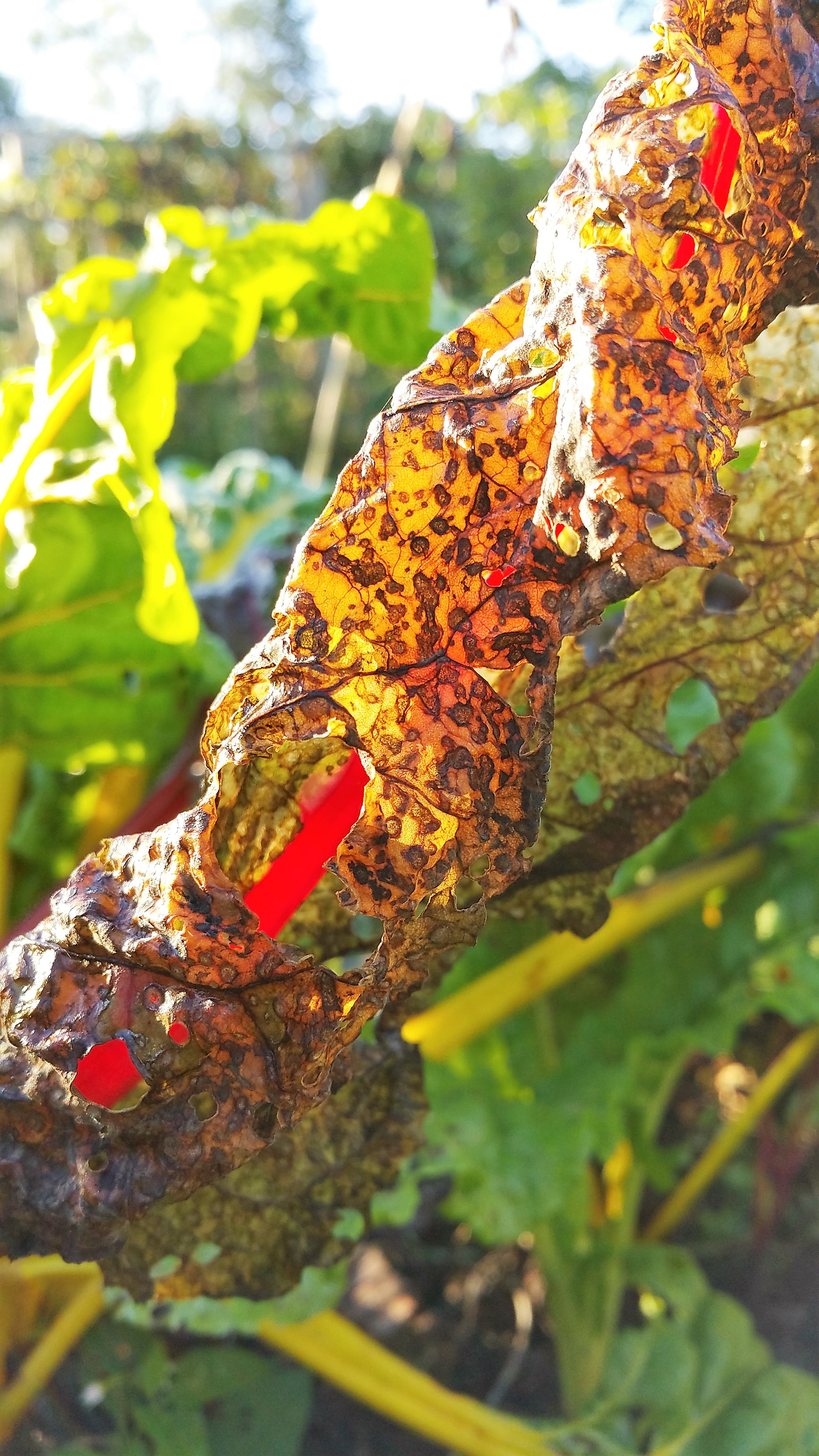
Considering row covers to protect next season’s chard
IPM teaches three types of control: 1) cultural (e.g., hand removal, row covers and barriers) , 2) biological (e.g., attracting pests natural enemies to the garden) and 3) selective pesticides to reduce but not eliminate pest populations Evaluate: Take a look at what works and make notes for the next growing season. This season in my garden, I had minimal success with delaying cucumber planting to avoid cucumber beetles; I’m taking great care to clean up the garden and remove weeds before seeding to help next season; and my heavier layer of mulching seems to help with this year’s tomato crop. Perhaps next year, I need to try fellow blogger Deb Knapke’s overhead netting to keep the birds from damaging my tomatoes and Michael Leach’s row covers to protect my cucumber plants and leafy greens.
The Franklin Park Conservatory in Columbus, Ohio is hosting David Rogers’ Big Bugs exhibition with 10 installations including an 18-foot tall praying mantis, a spider’s web that’s four yards wide, and a butterfly with a wingspan broader than average human height. The exhibit runs through Sept. 27.
by GardenLover | Sep 8, 2015 | Trendspotting
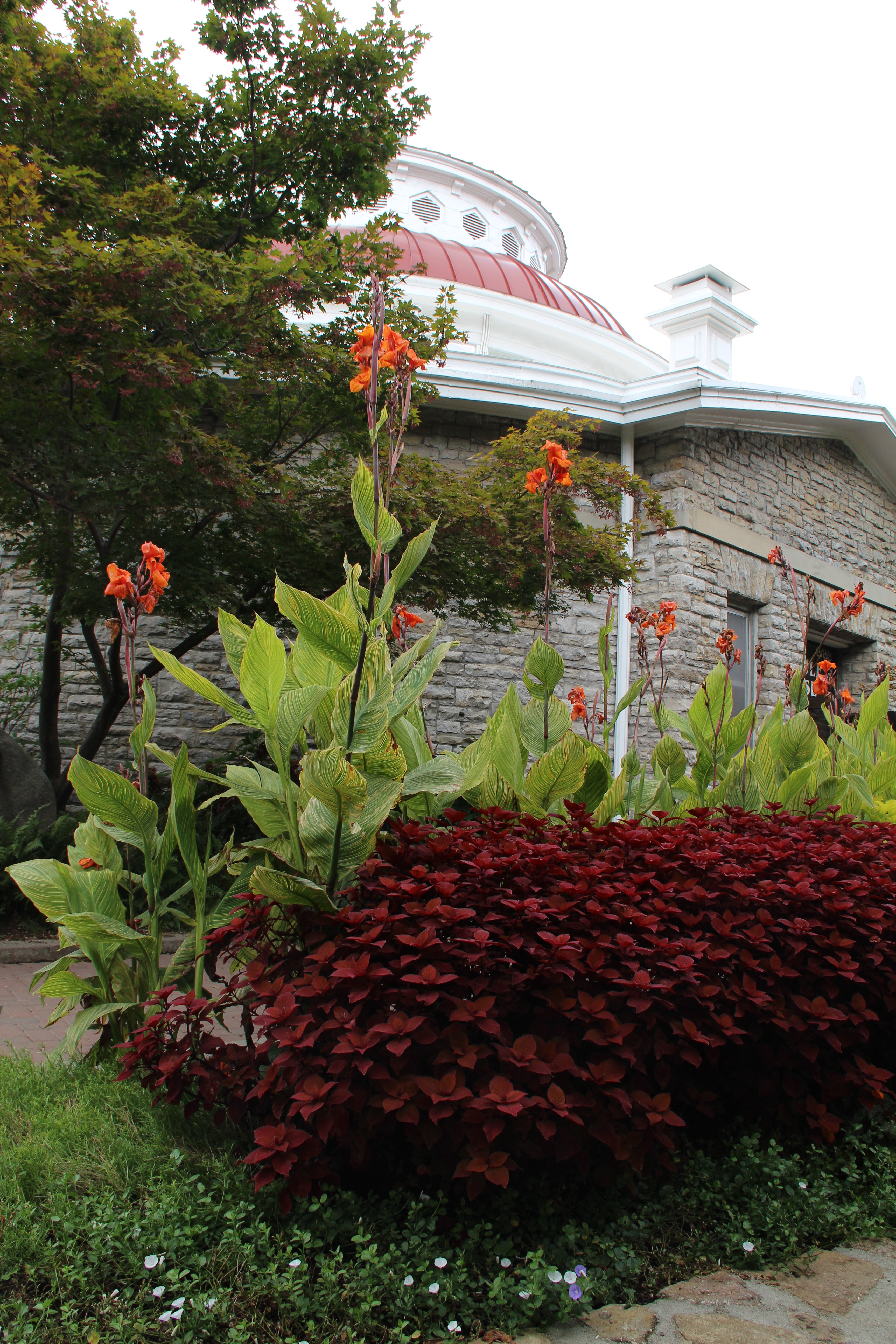
Each year, 15,000 annuals are planted at the Cincinnati Zoo & Botanical Gardens. Here, Canna ‘Bengal Tiger’ and Coleus ‘Keystone Kopper’ dress up the Reptile House.
Winning Plants for Summer Color
By Teresa Woodard
In the gardening world, annual plants are often the step-child to the perennial darlings. But Scott Beuerlein, horticulturalist at the Cincinnati Zoo & Botanical Gardens, opened my eyes to the virtues of annuals at the recent Plant Trials Day hosted at the beautifully landscaped zoo.
He says the colorful flowers can’t be beat for their “50 MPH wow”. They may only last for a season, but their color is nonstop for several months. Plus, they pack a lot of punch in container gardens, add traffic-stopping curb appeal to the landscape, build community pride in public spaces, bring joy to senior centers and hospitals, offer nectar and pollen to several pollinators, and even minimize weeds when densely planted.
Here are ten favorites at the zoo.
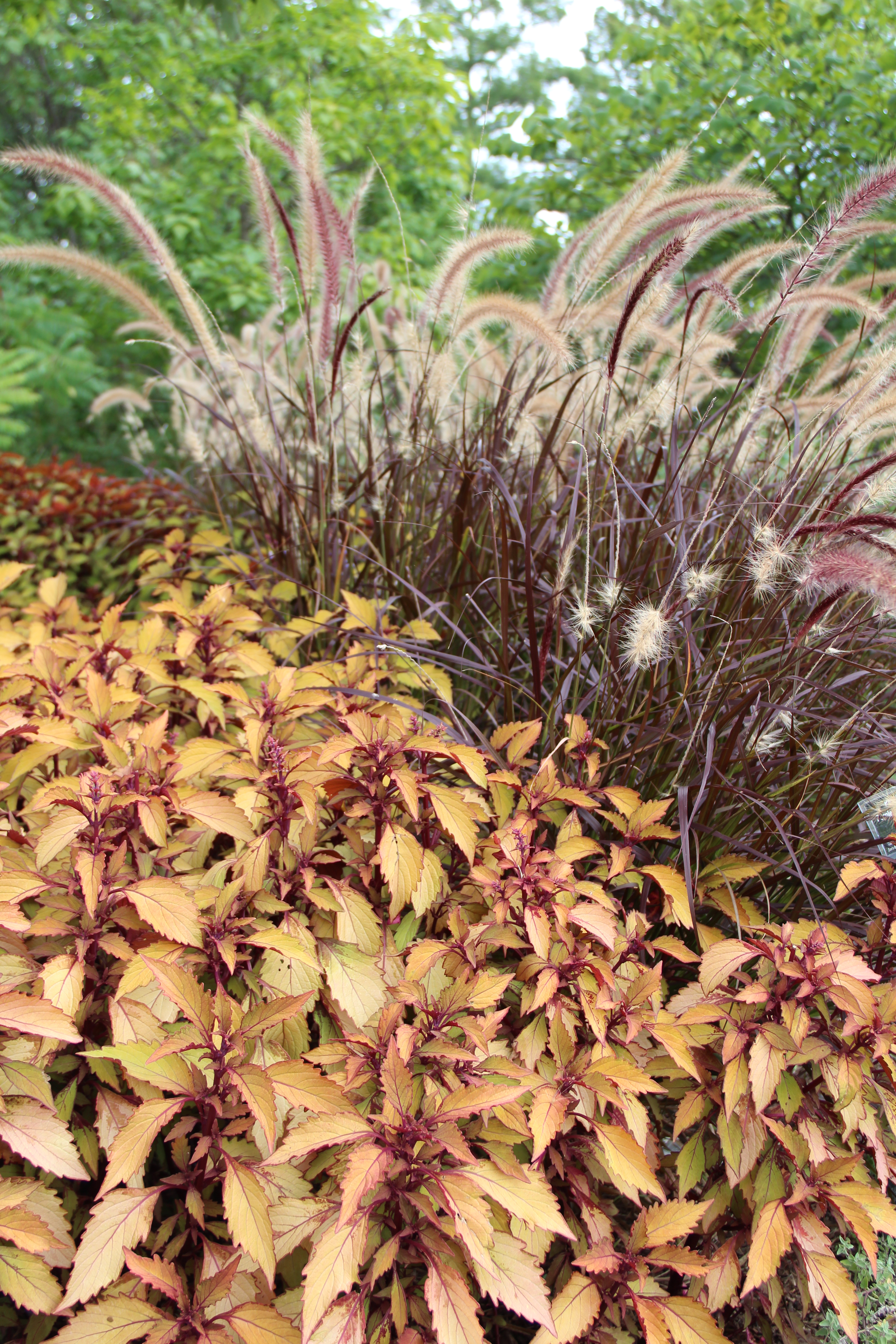
Pennisetum ‘Rubrum’ (purple fountain grass) and Flame Thrower Coleus ‘Spiced Curry’
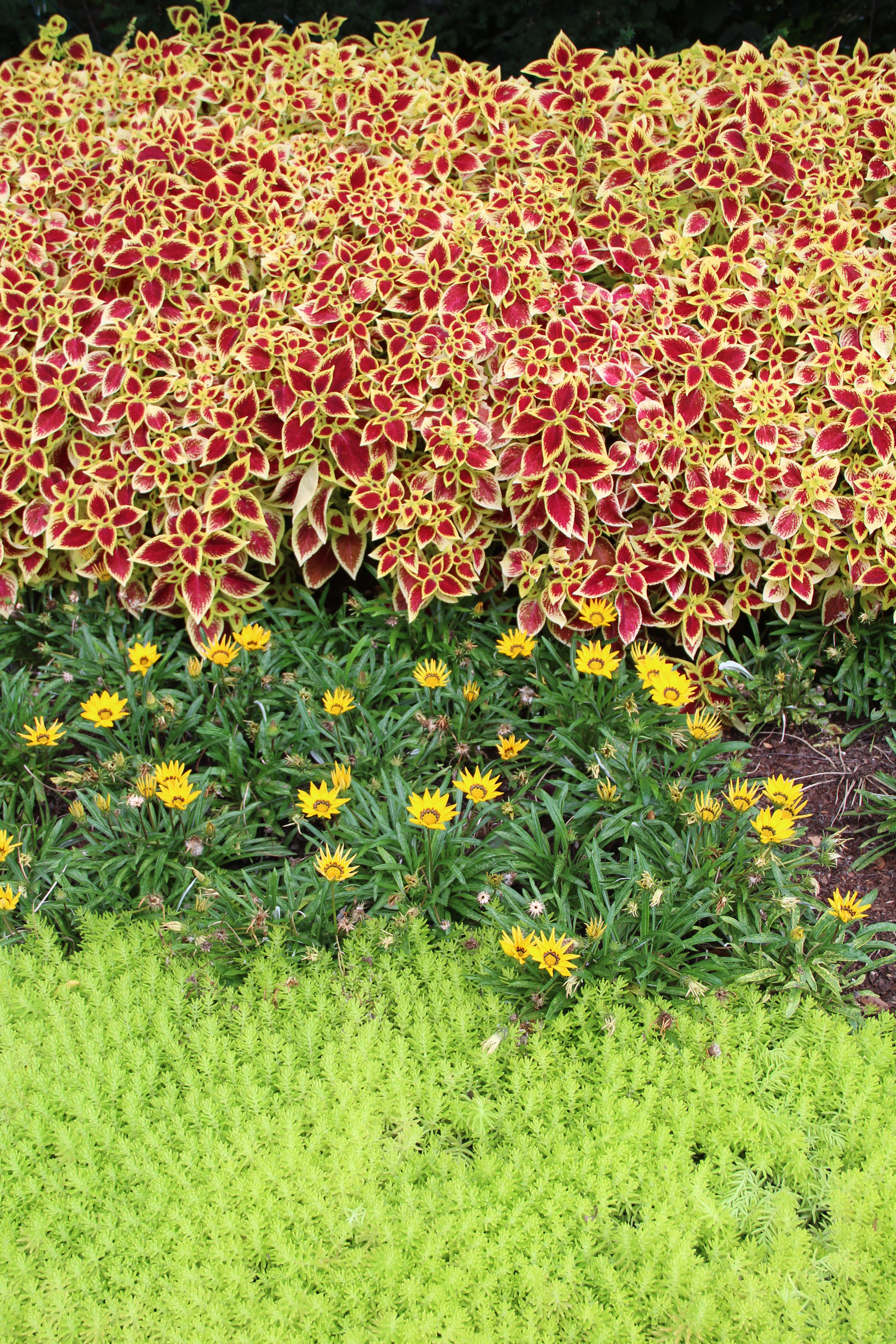
Coleus ‘Premium Sun Crimson Gold’ with Sedum ‘Lemon Coral’ and gazania.

Salvia ‘Golden Delicious’ and Zinnia ‘Sahara Double Fire’
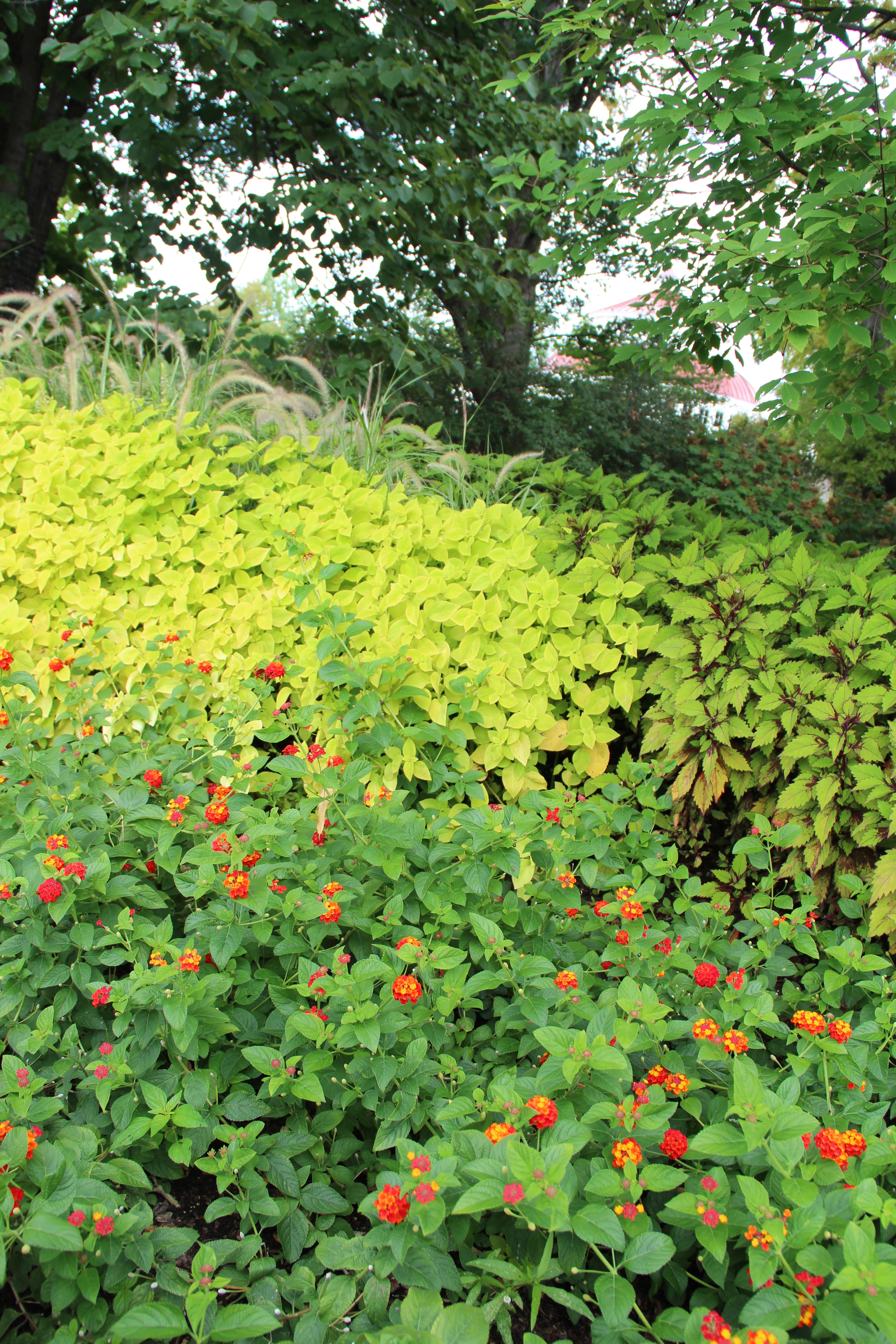
Coleus ‘Lime Time’ and Lantana ‘Luscious Citrus Blend’
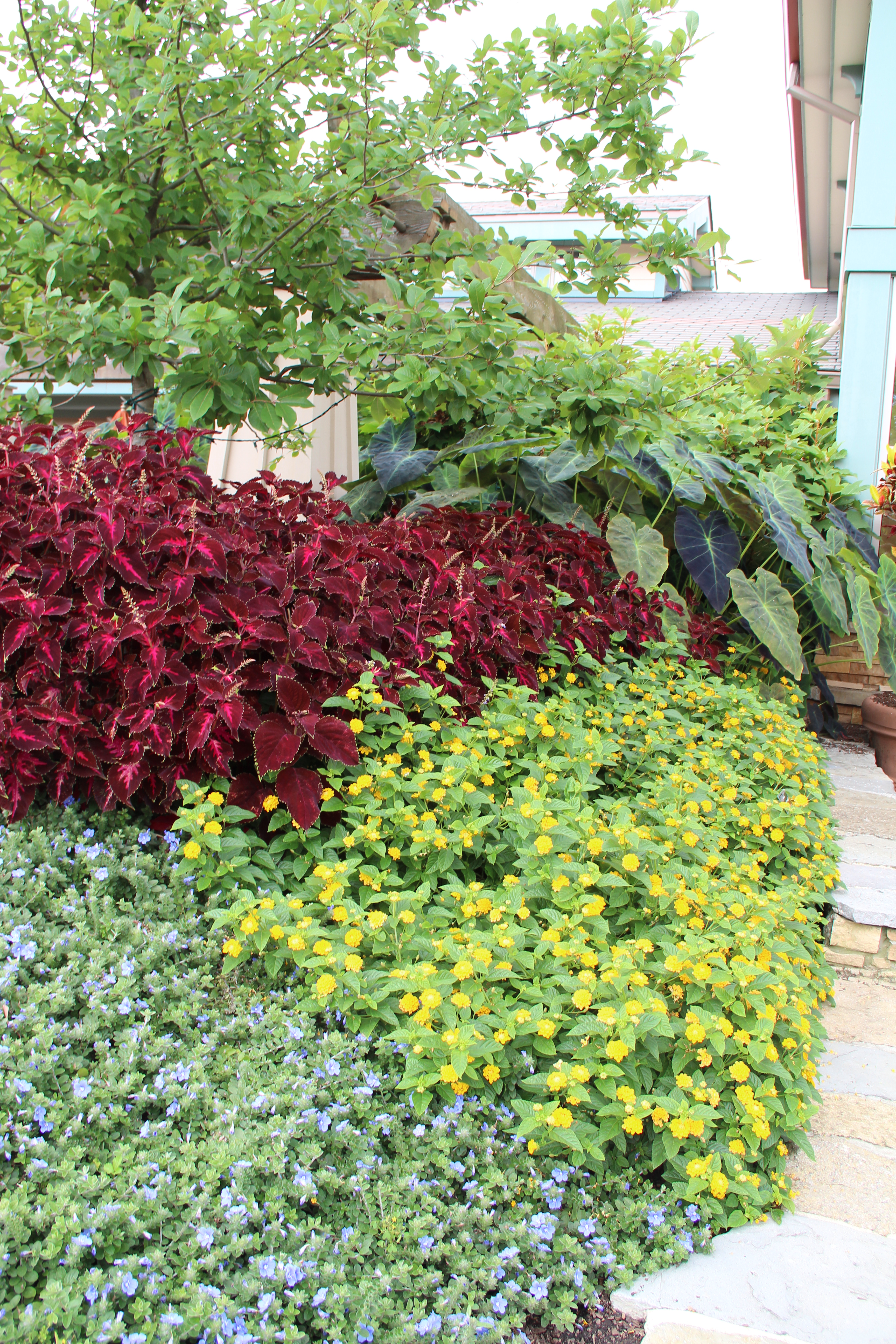
Coleus ‘Colorblaze Kingswood Torch’, Dwarf Morning Glory ‘Blue My Mind’ and Lantana ‘Little Lucky Pot of Gold’
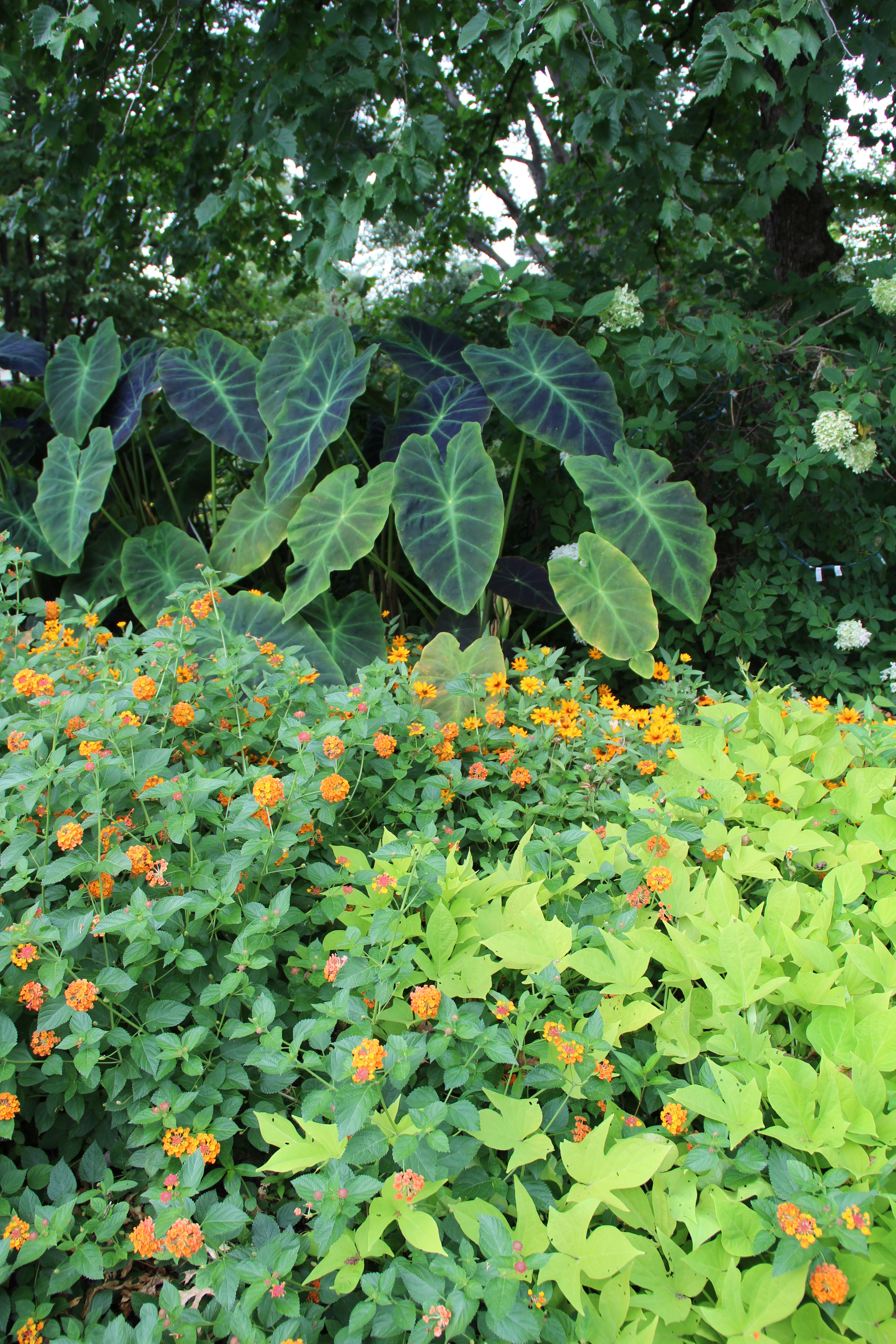
Colocasia, Lantana ‘Luscious Marmalade’ and Ipomoea ‘Sweet Caroline Light Green’ (sweet potato vine)
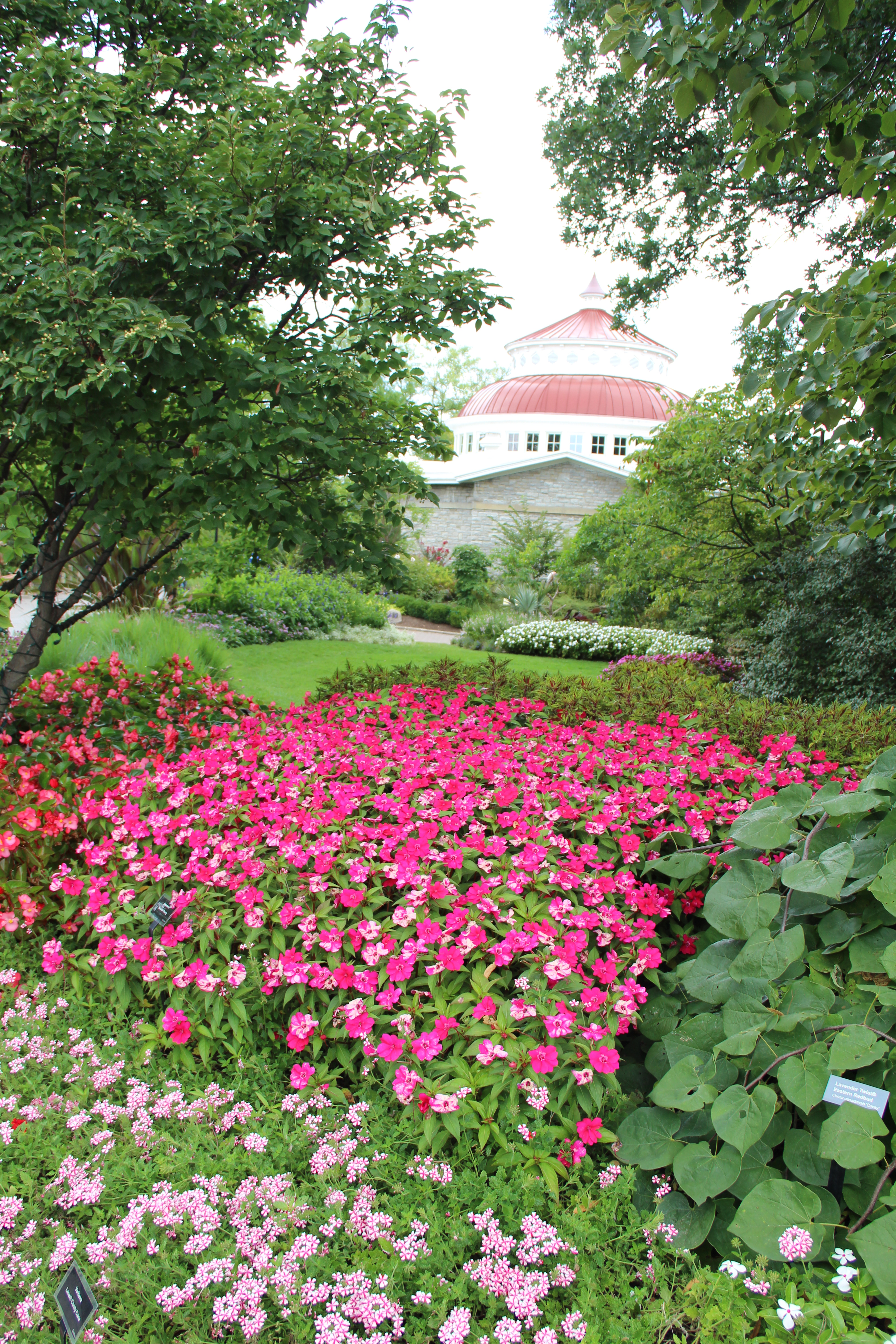
Impatiens ‘Bounce Cherry’ and Verbena ‘Lanai Candy Cane’
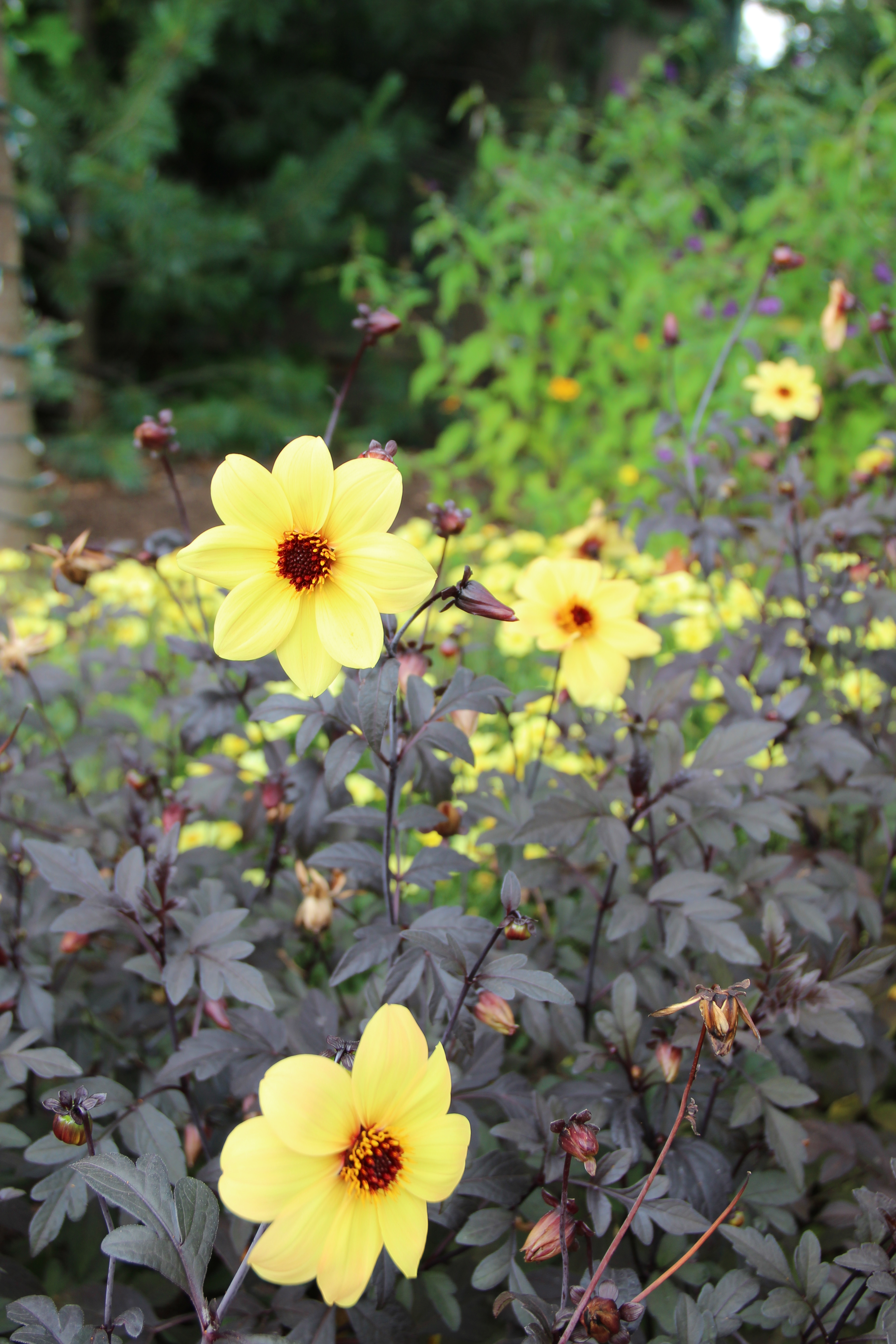
Dahlia ‘Mystic Illusion’
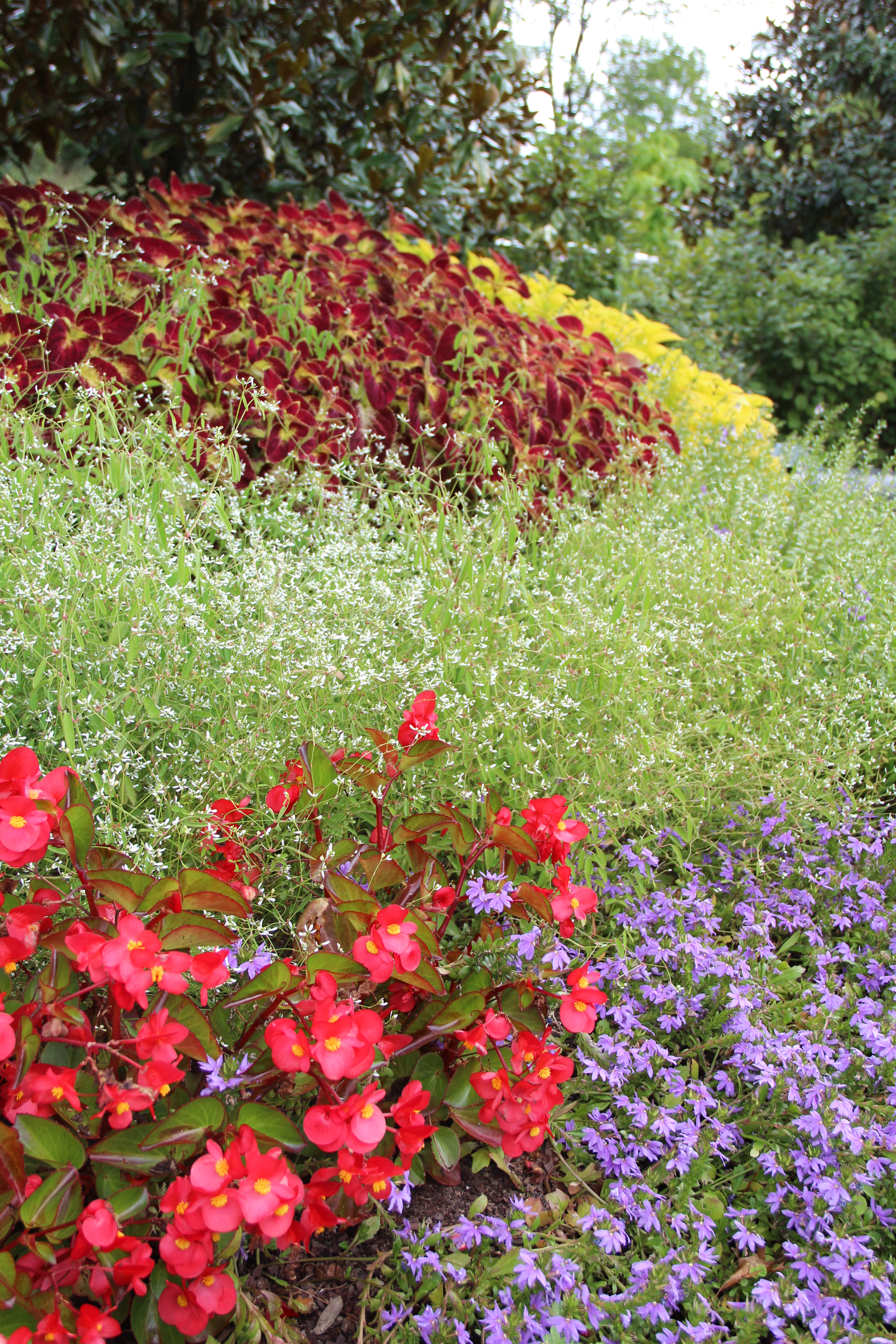
Coleus ‘Dipt in Wine’ and Euphorbia ‘Glitz’ with red begonias
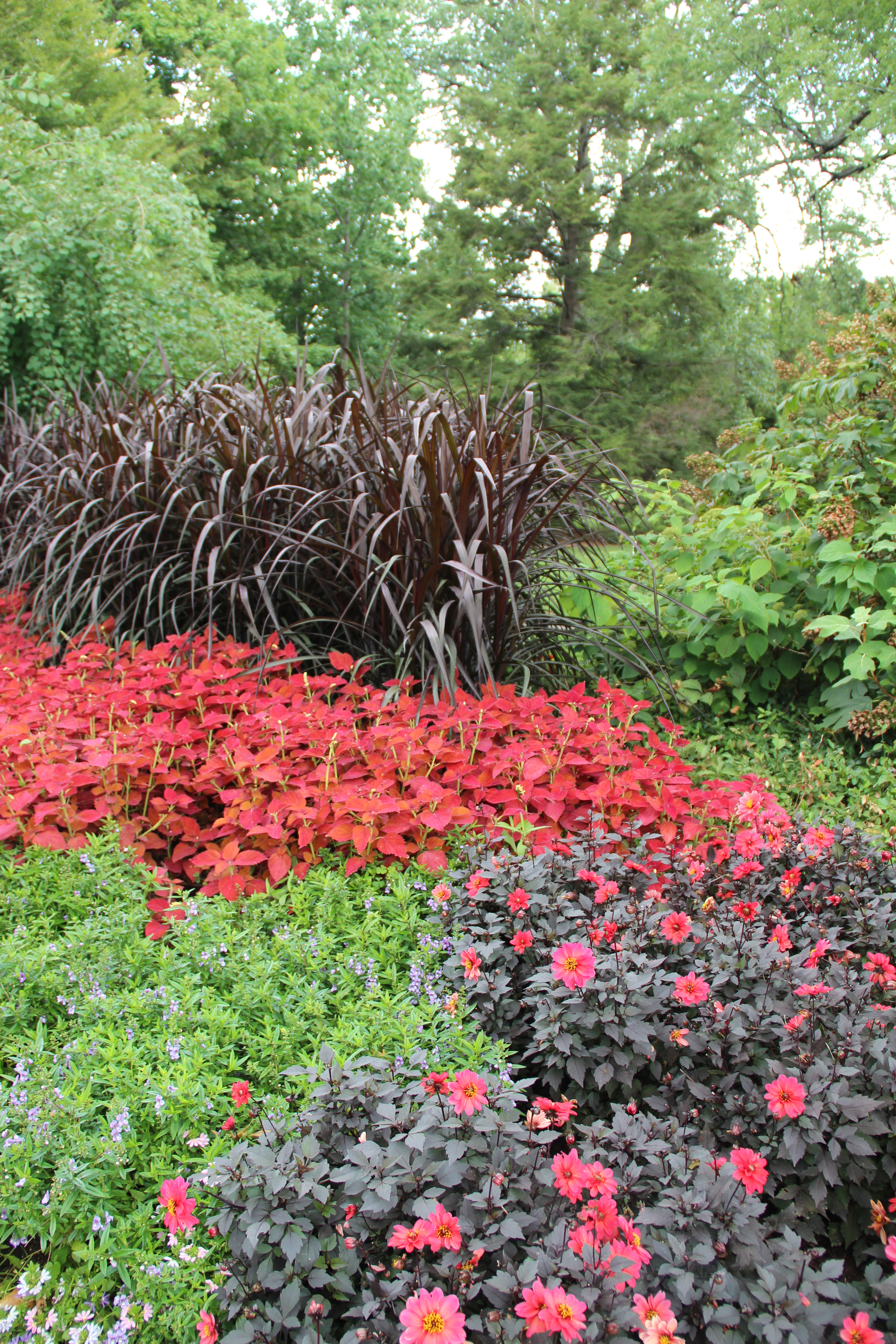
Pennisetum ‘Vertigo’ and Coleus ‘Alabama’ with dahlias.
by GardenLover | Aug 25, 2015 | Special Topic

By Michael Leach
When it comes to choosing house paint colors, a gardener must satisfy personal tastes and those of the plants. This seems a snap, considering one generally grows plants with blooms in colors that please one’s eye.
Not so fast.
My decision to paint the house is resulting in a brain freeze of indecision. Those 50 shades of gray represent only dab of what awaits in the Sherwin Williams color “fan”. The company takes all the strips of color chips found on a paint store wall and condenses them into a holder that suggests a lady’s fan of yesteryear. Open this at your own risk.
Some might say I’m stalling or being overly obsessive, which is saying a lot for a particularly picky sort. Whatever, I defy anyone — including the most laid back and colorblind — to decide how to redo a white house into a pale yellow one with white trim and some third accent color to highlight its few crumbs of Victorian gingerbread.
Will the colors enhance or spoil the garden? The house, after all, is a mere accessory that must flatter the flowers. This should be easy for me, given the three primary colors of red, blue and yellow are represented but generally only in their softest shades. Pink, burgundy, lavender, navy, butter, lemon and such colors blossom here.
Looking at paint with flower names seems a good starting point. Daffodil, Daisy, African Violet and Gladioli don’t work.
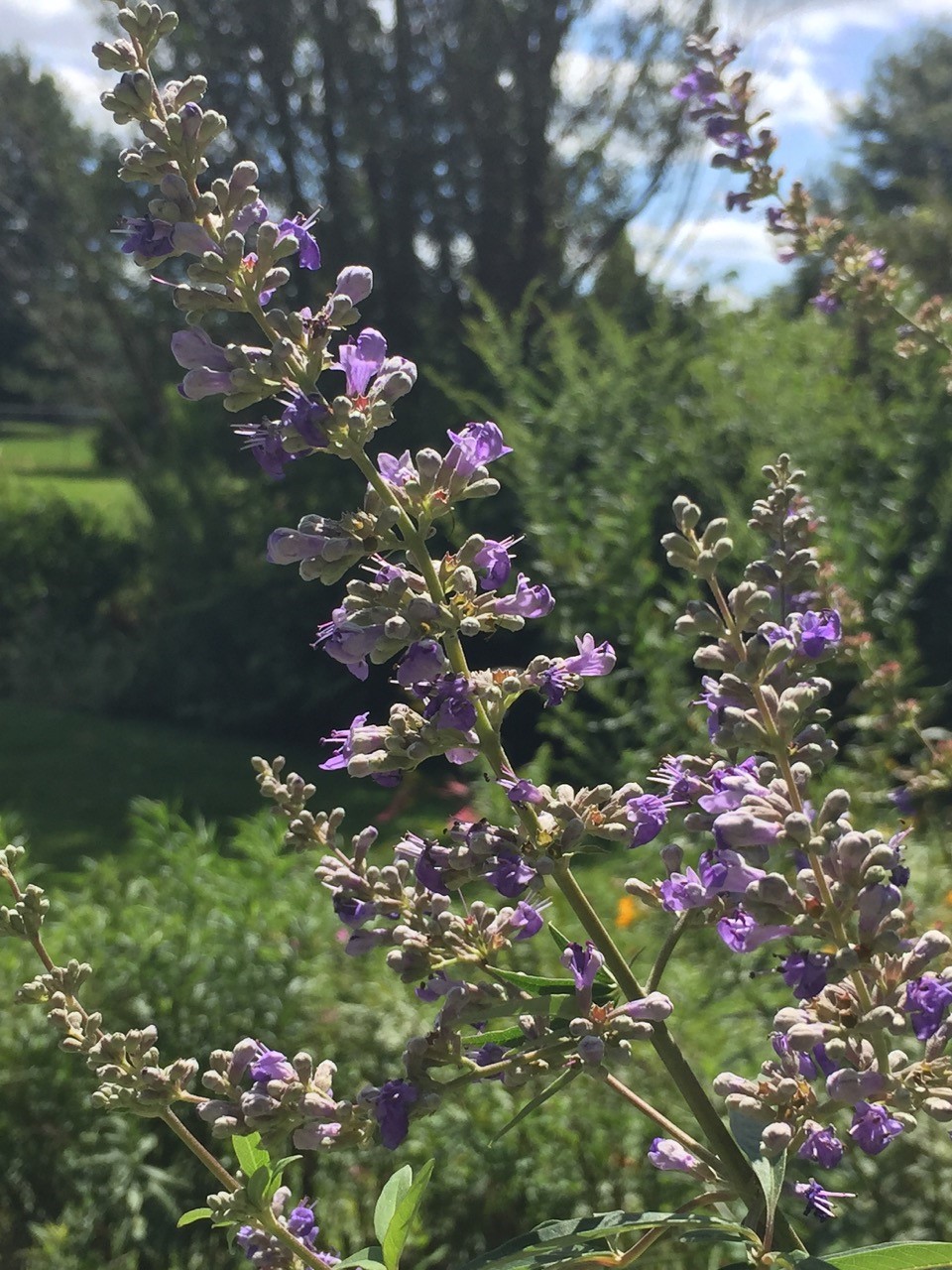
Vitex
Move to another part of the color wheel.
Radish and Cherries Jubilee, not quite in my range. I almost turn Heart Throb red when looking at pinks called Hot, Eros and Desire. These might please the naked ladies (Lycoris) but what about the sweet alyssum (Lobularia maritima) and my demure chaste tree (Vitex)?
In desperation I thumb through shades of orange. Aggressive, rather than lusty tendencies await. There are Stinging, Forceful, Raucous and Laughing oranges. I presume the laughter is derisive, not a friendly chuckle for a gardener perhaps a bit too concerned with a suitable backdrop for his flowery performers.
Blues. Can’t get beyond Undercool and Pulsating. If one combines Pulsating Blue and Forceful Orange, would this be construed as a pro-Florida Gator stance and so bring a horde of rabid Ohio State Buckeye fans posing as an “environmental cleanup” posse? Can’t risk this.
Green should be a soothing place to seek inspiration. Alas, no.
Witty and Humorous greens promise a jocund note —on someone else’s house. Certainly these are better than Nervy Hue or Impetuous. Does Kermit the Frog realize that being green is more difficult than ever?
Some of the “Fundamentally Neutral” shades bring clandestine operations to mind with Secret Garden and Shade Grown. These almost black greens might compliment the camo gear of a survivalist gardener but not me. Meanwhile, Sagey, Clary Sage, Dried Thyme, Rosemary and Basil make me hungry and think of kitchen duty, hardly the thing to enhance garden zen time.
At least these quieter hues have soothed me enough to consider stopping for lunch. That Basil is making me think of a sandwich with a sun-warmed tomato from the garden as a star attraction.
 Dose of denial keeps summer around no matter what calendar says
Dose of denial keeps summer around no matter what calendar says 
















